SUMMARY
This is AI generated summarization, which may have errors. For context, always refer to the full article.
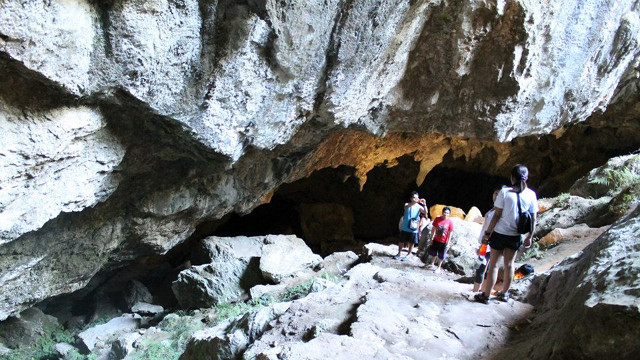
MANILA, Philippines – Spelunking is not for the faint-hearted, but first-timers are welcome to give it a try.
Perhaps that was the reason that compelled many first-timers to explore Sumaguing Cave in Sagada, Mountain Province through basic caving despite the lack of experience and knowledge of what lies underneath.
Sumaguing Cave has the largest chambers of all the caves found in Sagada, thus earning its nickname the “Big Cave.”
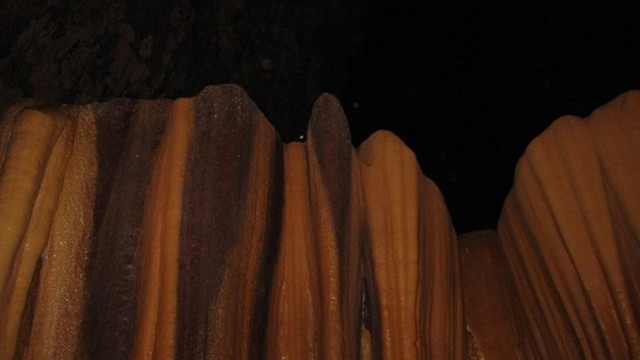
It draws visitors of different ages and levels of spelunking experience for its magnificent limestone formations and cavern-like expanse that can only be seen by taking the adventurous trail down the deep, dark, and cold cave.
Some, though, take the challenge to do something out of their comfort zone, while others are simply curious.
In spite of the differences in their motivation, caving enthusiasts would be greeted with the same hostile and unfamiliar environment once their guide leads them to the mouth of Sumaguing Cave.
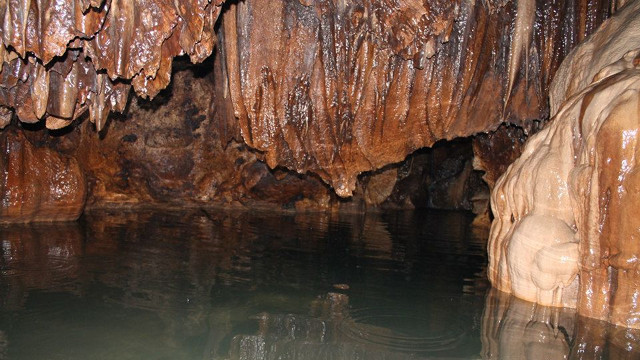
The sight of the gaping mouth and the dark abyss, and the trail of uneven carved steps that lead underground, is enough to rouse unpleasant feelings and weaken one’s resolve.
But caving has its lure, as they say. The thirst to see the unknown is just impossible to resist especially since it is the only way to see what only the imagination can supply.
Caving stages
1. The descent
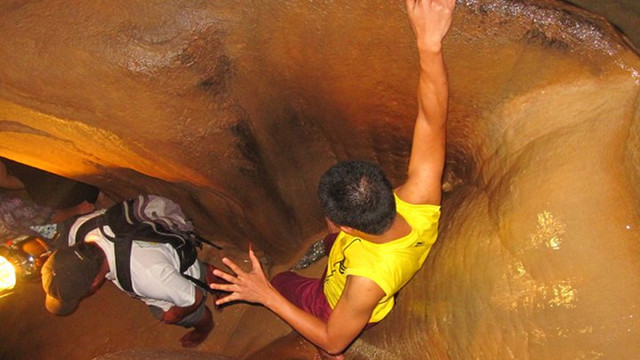
From the mouth of the cave, the tour guide would lead the group down the steep, bat-poop-covered cliff. The path to the bat cave is slippery, so holding onto rocks along the way makes for a safe descent. Spelunkers should just pretend that the slimy rocks they’re holding on to are not covered with bat pee!
During peak season, this part of the cave has long traffic since it is where the caving both starts and ends.
While waiting, spelunkers could use the time adjusting to the new surroundings. Welcoming the energy that emanates from the seemingly pulsating outcropping of rocks helps soothe the senses.
2. The easy part
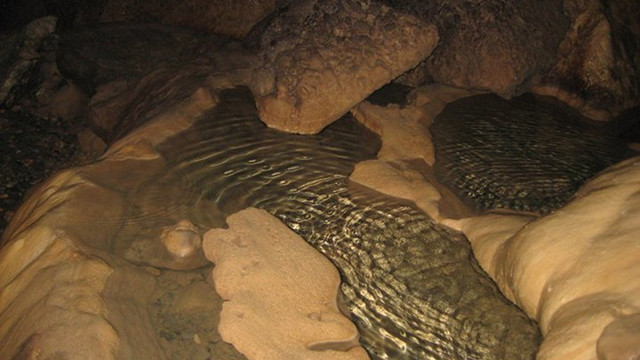
With a reassuring gesture, the tour guide would ask the group to remove footwear since walking barefoot allows better traction than walking with any non-slippery footwear on. Crossing the wet slope that bridges the bat cave to the looming chambers from afar could stir fear, but as one learns how to move without slipping, worries seem to subside along with the eerie squelch of the bats.
Reaching the second stage – where the cave’s bath house and several notable rock formations are found – would be a relief because spelunkers can rinse their dingy hands and feet in the shimmery streams of water.
3. The difficult part
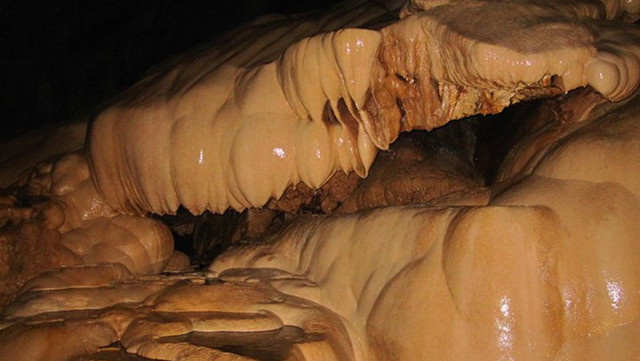
It is in this phase where every first-timer’s spelunking skill would be put to test. They would slide and slip, crawl and leap, and at times rappel to move from one area to another. Guides are there to support all the way, that they are willing to be a “human ladder” to make the descent in difficult terrain less strenuous and frightening.
As the process gets more challenging, the more the cave reveals impressive rock formations, such as the King’s Curtain, Rice Terraces, and the huge hall called the Dancing Hall. The glassy limpid pools are also a sight to behold.
National Geographic correspondent Peter Standring joined outdoor adventurer Matt Markoff in his spelunking adventure in West Virginia. Markoff showed the basic skills needed for a safe and fun spelunking experience:
Spelunking in Sumaguing cave is far from the typical sightseeing adventure. It involves physically demanding activities which, when faced and overcome, can make for a rewarding and memorable experience.
Do’s and don’ts
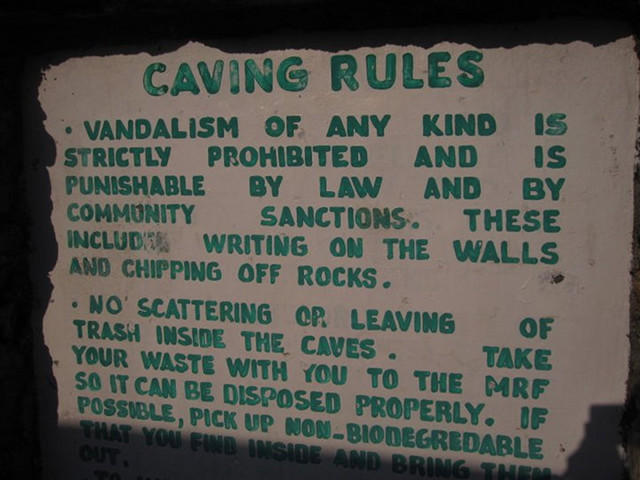
1. Bring a tour guide
Look for registered guides at the office of SAGGAS and arrange a transportation service since the cave is a 30-minute drive from the town proper. If your group chooses to walk, bring a change of clothes to avoid catching colds.
2. Wear the appropriate attire
Choose light, easy to dry, and stretchable clothes. Use sturdy and non-slippery footwear and bring gloves to avoid touching bat pees with your bare hands.
3. Explore the cave with a group
It’s advisable to do it with a group because there are times when you’d need a helping hand, words of encouragement, and, yes, a cheer to lighten everyone’s mood.
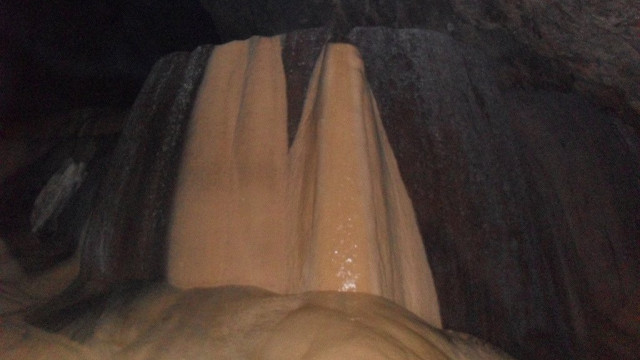
4. Follow the guide’s instructions
Tour guides are trained in caving. They are familiar with the trail and have gone through safety drills. So listen to them for your safety and enjoyment.
5. Vandalism and littering are not allowed
Both littering and vandalism through writing on the cave walls or writhing of rocks are punishable by law.
6. Don’t bring children
The trail down the cave is not child friendly, so let them skip this activity. – Rappler.com

Mavic Conde is a web content writer based in Bicol. She travels to tell stories about the joys of journeying, interesting cultures and places, and unique personalities. Recently, she joined Bicolandia magazine, a local publication that aims to promote tourism in Bicol.
Add a comment
How does this make you feel?
There are no comments yet. Add your comment to start the conversation.